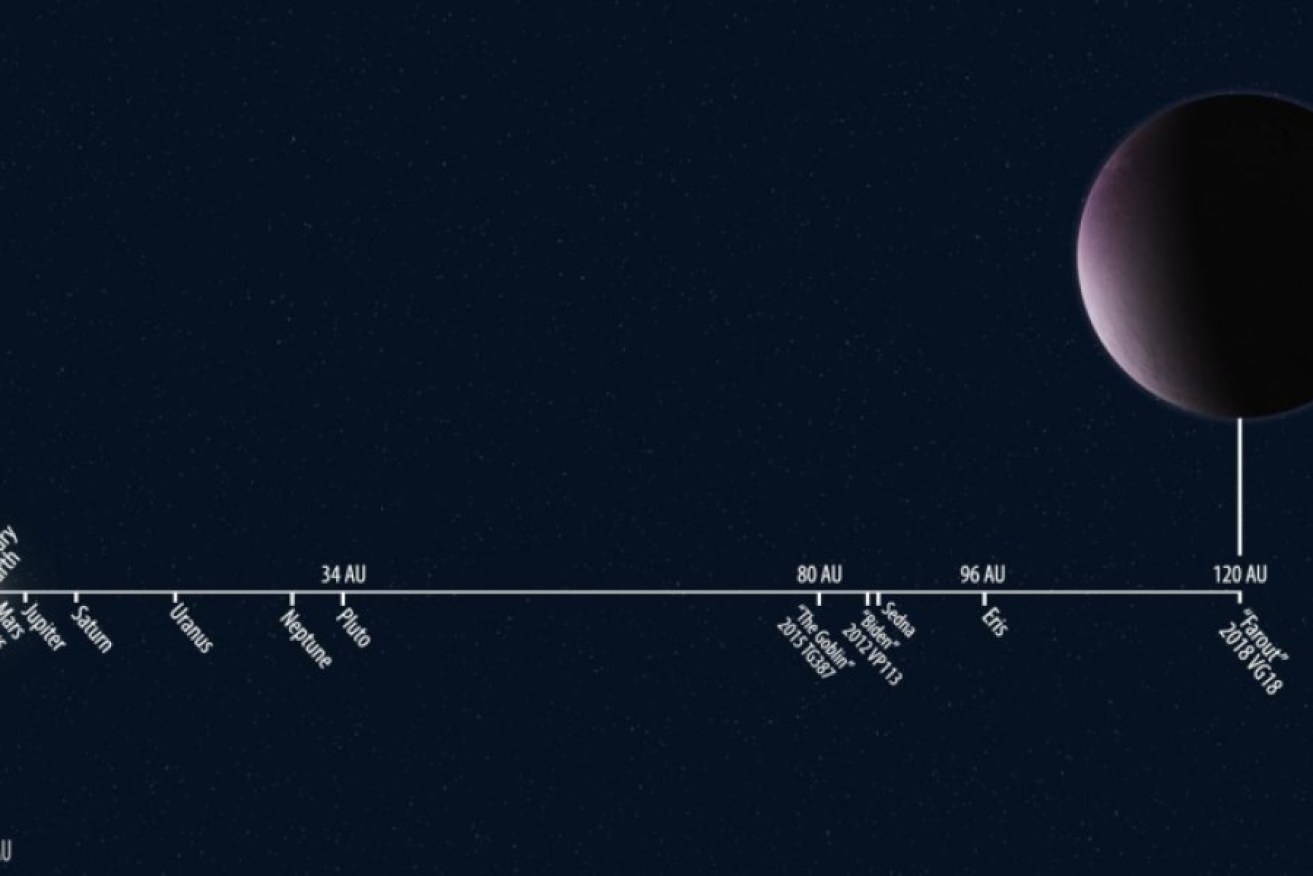Astronomers discover the most distant object in the solar system


Solar system distances to scale showing "Farout" compared to other known solar system objects. Photo: Carnegie Institution for Science
A newfound object has been named the most-distant body ever observed in the solar system, located at a distance100 times farther than Earth is from the sun.
The small object, nicknamed “Farout”, is distanced about 120 astronomical units (17.9 billion kilometres) from Earth to the sun, according to the group of three astronomers who made the astounding discovery.
That is three-and-a-half times more distant than Pluto, the solar system’s most-famous dwarf planet, the discovery team noted.
The second-most-distant observed solar system object is Eris, about 96 AU (14.3 billion kilometres).
Announced on Monday by the International Astronomical Union’s Minor Planet Centre, the object was discovered as part of the team’s ongoing efforts to detect extremely distant solar system objects, most notably the so-called Planet X, otherwise known as Planet 9.
Researchers say Farout is about 500 kilometres in diameter, likely making it spherical in shape and a dwarf planet. It has a pinkish hue, a colour generally associated with ice-rich objects.
This is 2018 VG18, nicknamed “Farout,” because it’s the most-distant object ever observed in our Solar System. It was discovered by @CarnegiePlanets‘ Scott Sheppard, @UHIfA‘s Dave Tholen & @NAU‘s Chad Trujillo and announced by the @MinorPlanetCtr today. https://t.co/03QWH22VMv pic.twitter.com/ravOzDw3rw
— Carnegie Science (@carnegiescience) December 17, 2018
It may take astronomers a few years to determine Farout’s orbital speed around the sun, as it is “much more distant and slower moving than any other observed solar system object”, researcher Professor Scott Sheppard said.
Farout was found next to other known extremely distant solar system objects, suggesting its orbit may be the same as most of them, Professor Sheppard said.

We don’t know much about Farout, just its size, how far away it is, and what colour it is. Photo: Carnegie Institution for Science
“The orbital similarities shown by many of the known small, distant solar system bodies was the catalyst for our original assertion that there is a distant, massive planet at several hundred AU shepherding these smaller objects,” he said.
“All that we currently know about 2018 VG18 [Farout] is its extreme distance from the sun, its approximate diameter, and its colour,” co-researcher David Tholen from the University of Hawaii said.
“Because 2018 VG18 [Farout] is so distant, it orbits very slowly, likely taking more than 1000 years to take one trip around the sun.”








